5 Guidelines for Composition in Photography: There is more to taking great images than picking up the camera and taking a photograph.
When you grasp the 5 intuitive guidelines for composition in photography, you will train yourself to have an eye for great images. Composition is the impetus and inspiration to great photography. Keep them in mind and you will take great images!
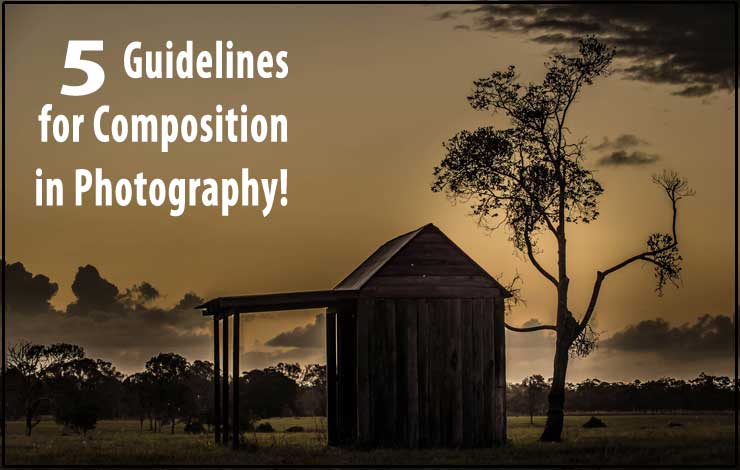
5 Guidelines for Composition in Photography
I stumbled into photography many years ago because I wanted to find a hobby that was stress free and relaxing. What I didn’t know at the time was my lack of understanding of photography!
I love taking great and exciting photographs but I discovered that my images were very plain indeed! It’s not that I didn’t have great digital cameras or fast lenses because I did.
I came to realize that I needed to learn what was required for taking great photographs. The guidelines for composition in photography was one area I needed to study and understand. Knowing these guidelines helped me develop an eye for great images.
The following 5 guidelines for composition in photography remind me what it takes to snap great photographs, especially landscape photographs.
1. The Rule of Thirds
I always placed the subject of the image in the middle of the photograph, that is, until I realize the significance of the the rule of thirds. This one guideline changed how I took photographs straight away. Every time I take a photograph now I contemplate the rule of thirds.
It doesn’t mean I never center the subject in middle of the image; it just means I have more options now when it comes to composition.
The rule of thirds suggests that the image is divided into nine equal proportions with two vertical and two horizontal lines. It give you the opportunity to position the subject along these longs or at the point of intersection of the lines (see photo below).
When I look at great images now, I see that the photographer took time to position the subject in the best possible space.
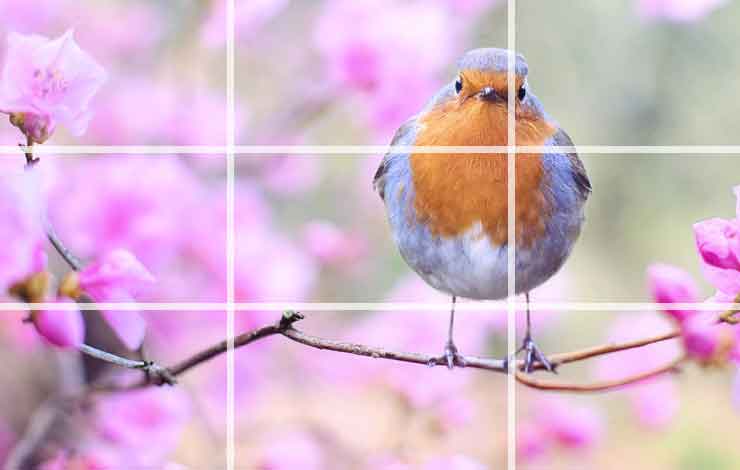
2. Balance the Image
Once I understood the rule of thirds, I intuitively look for balance in the photography. I take my time now to find the right balance to the image.
That may require a change of angle or it may require a better position to take the shot in order to get the balance exactly right. I spend more time now walking around looking for the best position.
A well-balanced image is noticeable and people will make comment. Balance is about being creative (see image below).
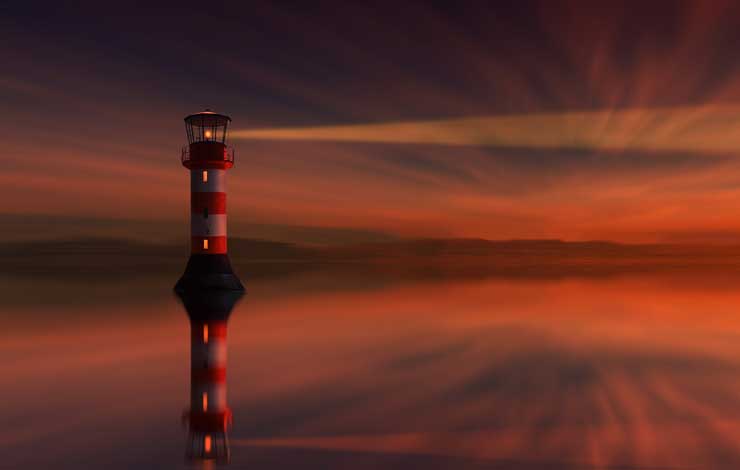
3. Natural Lines
The more I studied composition the more my world of photography exploded. I began to see natural lines in nature which pull people into your image to see the depth and beauty of creation.
Natural lines come in many forms like a fence, a road, a line of trees, mountains or a row of corn in the field. If you look long enough, you will see natural line everywhere. It just means you need to walk around in order to find the natural line so that you can take creative photographs.
Natural lines in the landscape enhance creative photography and produces that inspirational photograph!

4. Depth of Field
I found depth of field to be a very interesting subject. Also, it is a very important element of photography. Shallow depth of field is used for portrait and close-ups; whereas, large depth of field is used for landscapes.
Knowing the basics about Depth of Field certainly enhanced my photographic skills!
What is depth of field? Depth of field is the clear area or the sharp area around the subject in your image. Shallow depth of field keeps the subject sharp and blurs the background or foreground. Large depth of field means that the whole image is sharp. This especially important for landscape photography.
It took me awhile to understand how I could manipulate the depth of field in photography. I learned quickly that there are three elements that control depth of field – the aperture setting, the focal length of the lens and the shooting distance from the subject.
A. The Aperture Setting
I owned a digital camera for many years without realizing that I could change the aperture setting of the lens. To keep it fairly simple, the aperture of the lens when opened lets in more light (smaller numbers like f/1.4 means more light) and therefore gives the photographer greater opportunity to create shallow depth of field.
When you stop down (larger numbers like f/22 means less light), it give the photographer greater opportunity to create larger depth of field. Remember shallow depth of field blurs background and foreground but keep the subject sharp. Larger depth of field keeps the whole image sharp.
The best way to learn how the aperture governs depth of field is to take photographs and experiment with the aperture settings.
B. The focal length of the lens
Depth of field is influenced by the focal length of the lens. That’s why landscape photographers use wide angle lenses like 14mm, 20mm or 24mm. These lenses allow for larger depth of field.
If I use a 20mm lens at f/8 and a 50mm lens at f/8, then the 20mm lens creates a larger depth of field and the 50mm lens creates a shallow depth of field. Again the best way to learn how the focal length of the lens governs depth of field is to experience with both lens.
C. The Shooting Distance
I have a great lens for portrait photography. I took the photographs of my daughters graduation. To blur the background of the images, I simply moved closer to the subject and this created a shallow depth of field. when I moved away from the subject, I created a larger depth of field.
The best way to learn how shooting distance governs depth of field is to put a 80mm or 100mm lens on the camera and moved closer to the subject and away from the subject. You will soon see the difference (see images below).

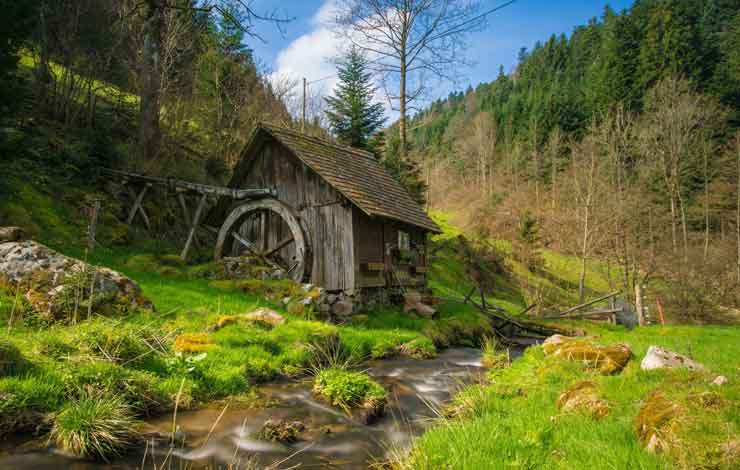
5. Framing the Photograph
When I am taking a landscape photograph, I look for natural elements to frame my shot. I use things like a tree trunk, an overhanging branch or the side of a building.
Again you just need to walk around and find these natural frame that brings out the beauty of our environment. When you are aware of these natural frames, you will see them everywhere.
The 5 guidelines for composition in photography are really common sense once you know them. Knowing the 5 guidelines for composition in photography inspires the creative in photography. People will notice when you take great and exciting photographs. I must say that I delete less photographs now because I have learned to take better ones.
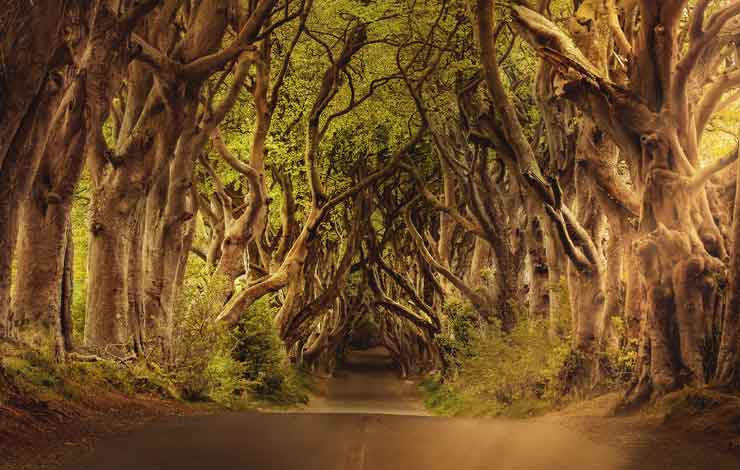
Resources For Rules of Composition in Photography
Photography Masterclass: Photography Masterclass by Evan Sharboneau is a collection of 29 videos totaling nearly 12 hours of extraordinary training that will give you great information in order to get the most out of any DSLR camera (if you click on this link and purchase Photography Masterclass, I get small commission for providing the link!).
